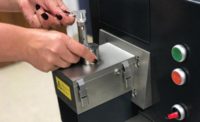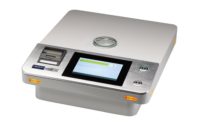Complex supply chains, zero-fault quality strategies and more demanding regulations and standards mean metals processing businesses are under increasing pressure to check their incoming materials beyond grade information and verify tramp and trace elements content before allowing them into production. To meet these new high-demand QAQC requirements, the new OE750 optical emission spectrometer covers the entire spectrum of elements in metal and has some of the lowest detection limits possible.
The result is an analyzer that has the capability of much more expensive instruments, bringing high quality analysis within reach for the first time for many metals working businesses. New optical concepts, with four patents pending, using CMOS detector technology is behind the high level of optical resolution and large dynamic range of the OE750. As a result, this new analyzer has a very wide wavelength range, meaning it can measure the entire range of elements within metals at low ppm levels.
This is essential for meeting today’s tight metals specifications and the analyzer can meet the requirements of relevant standards and specifications, such as, for example, the ASTM E415 test method for carbon and low-alloy steel and ASTM E1086 the Standard Test Method for the analysis of Stainless Steel by Spark Atomic Emission Spectrometry.
One advantage of the OE750’s new optics design is the fast start-up time. The instrument is ready for use in less than an hour, thanks to the low volume occupied by the optics. This aids high throughput production, where facilities need to check 100% of the material supplied. In addition to the new optics design, the OE750 has other technical features that support high volume metals analysis. It has a new sealed spark stand with optimized laminar flow; this reduces argon consumption, reduces the likelihood of contamination and drastically reduces maintenance requirements. A mid-pressure system with low-pressure argon purge cuts down the pump usage. This reduces the power consumption of the pump by 90% and enables an oil-free design to be used, increasing reliability and instrument uptime. This makes the OE750 highly reliable with low operating costs.
In addition to innovative hardware technology, the new OE750 includes software that enhances its performance. For example, it includes the Hitachi GRADE Database that includes more than 12 million records for over 339,000 materials from 69 countries and standards, reducing time and potential errors from manually consulting grade catalogs. As an option it comes with a SPC/LIMS package enabling an easy an effective monitoring of processes involved with the instrument and the processes to be controlled with it. This is an ideal tool to meet demands from standards such as IATF 16949.
Wilhelm Sanders, Hitachi OES Product Business Development Manager, said, “In the past, metal processing businesses had to choose between high performance analysis and instrumentation that was in their price range. Thanks to the new OE750 they no longer have to make that compromise. The OE750 offers comprehensive metals analysis in one accessible package.”
For more information, visit www.hhtas.net/oe750.




